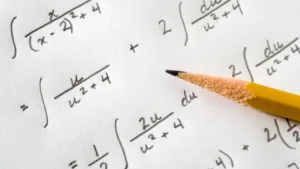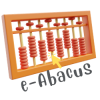Why Handwriting Still Matters (Even in a Digital World)
In an era of screens and keyboards, handwriting can seem like an old-fashioned skill – but research shows it remains incredibly valuable. Writing by hand engages more areas of the brain than typing, activating visual, motor, and auditory pathways all at once. In fact, studies around the world find that people remember information better when they write it out by hand instead of typing it. When you shape letters on paper, you’re not just recording words; you’re giving your brain extra time to process and store ideas. This slower, tactile process also encourages creativity and deeper focus. For students taking notes, for example, handwriting helps imprint lessons into memory. In short, the simple act of pen on paper can strengthen learning in ways digital devices can’t easily match.
Even for adults, writing by hand isn’t just nostalgic – it’s neuroscience. Research shows that putting pen to paper “activates multiple brain regions,” improving memory retention and cognitive function. As one recent study noted, learning a new word or symbol by writing it involves linking visual, motor, and auditory information, creating more neural connections than simply typing or reading. In practice, this means that writing can help you learn faster and remember longer. It’s why students who jot notes by hand usually recall lectures more easily, and why artists and executives alike keep paper notebooks at the ready. Handwriting engages the senses and slows us down – and this deliberate process leads to better understanding, richer ideas, and stronger memory in learners of all ages.
The Multifold Benefits of Beautiful, Legible Handwriting
Clear, neat handwriting brings rewards far beyond just pretty penmanship. Cognitive & Educational Gains: When letters flow easily from hand to paper, the brain is hard at work learning and organizing ideas. Students who write by hand tend to understand and remember information better than those who only type. In fact, handwriting practice is linked to stronger spelling, reading, and overall literacy: as children shape each letter, they internalize how language works, reinforcing skills that carry across all subjects. In the classroom, handwriting can even make a measurable difference on grades. Researchers have found that students with neater writing often earn higher marks than peers whose letters are messy – even when their essay content is of similar quality. This “presentation effect” happens because teachers subconsciously judge work on appearance as well as substance.
- Memory & Learning: Handwriting forces us to slow down and process ideas. Studies show that people encode information more deeply when they write it by hand. Because forming letters is a complex motor skill, it ties learning to physical action, making facts stickier in your memory.
- Academic Performance: Legible writing lets students demonstrate their knowledge fully. In exams and homework, clear handwriting means teachers can actually read and appreciate each answer. In one study, when two essays had equal quality content, the one written in poor handwriting scored lower than the one with neat penmanship. In effect, writing neatly can open doors: as one expert puts it, our writing “may influence the way people think about us,” and can “open doors or limit progress”.
- Confidence and Self-Esteem: Seeing progress in handwriting has real emotional benefits. As children master neat writing, they feel proud of their accomplishment and more confident in class participation. This boost in self-esteem often spills over into other schoolwork, encouraging a positive attitude toward learning. Adults, too, feel more capable and composed when their writing is legible and attractive – it’s satisfying to deliver a clear, well-presented note or letter. In short, excellent penmanship can literally help people see you in the best light.
- Professional Edge: Even today, handwriting matters in many professional contexts. A crisp, legible signature on a form, a thoughtful handwritten thank-you note, or clear notes during a meeting all demonstrate care and competence. Good handwriting suggests attention to detail and can enhance personal branding – for jobs in design, architecture, culinary arts, or anywhere a handwritten component appears, beautiful writing sets you apart.
Good handwriting also helps communication. When ideas flow smoothly on the page, readers (teachers, bosses, or anyone you write to) can focus on the message instead of puzzling over letters. Educators note that handwriting is “a fundamental means for students to communicate their knowledge,” making it a crucial skill for success. Whether it’s jotting down homework, preparing a meeting agenda, or exchanging love letters, clear handwriting ensures you’re understood and respected. In fact, researchers have found that the act of writing by hand actually improves how well you learn. A French study (Van der Meer & Van der Weel, 2024) reported that handwriting increases brain connectivity and may even help protect against age-related cognitive decline, far beyond what typing alone can achieve.
Start Early, Succeed Sooner (But Adults Can Improve, Too)
It’s never too soon to give children strong handwriting skills. Young kids have a head start: their brains are highly plastic and easily absorb the motor patterns of writing. Early practice helps link letter shapes with sounds, reinforcing reading and spelling. As one occupational therapist notes, the brain maps involved in handwriting help children “become skilled writers” who can express ideas fluently. The fine motor skills developed by ages 4–7 make this the ideal time to practice proper grip and letter formation. By improving writing early, you can set up a lifetime of confidence in schoolwork and beyond.
That said, it’s never too late to improve your penmanship. Adult learners benefit in surprising ways. Every time you practice handwriting, you’re exercising your brain – similar to a puzzle or learning a new language. Recent studies find that writing by hand each day strengthens neural pathways and can even enhance memory and cognitive function. In an aging brain, the multi-sensory nature of handwriting (seeing, touching, moving) combats cognitive decline and boosts alertness. In one striking experiment, older adults who wrote daily by hand showed greater brain connectivity than those who only typed.
For example, one retired traveler discovered that her daily journaling – writing memories, sketches and notes by hand – offered deep enjoyment and cognitive benefits. Researchers now suggest that picking up a pen can be a form of “brain health” routine, improving mood and mental sharpness. So whether you’re a busy parent or a grandparent, don’t assume neat handwriting is only for kids. Practice lettering a few minutes each day, and you’ll likely notice your mind feeling sharper and more focused. Adults often find that improving their handwriting rekindles creativity and satisfaction – proving the adage that you really can teach an old dog new tricks.
Mastering the Mechanics: How to Improve Handwriting
Improving handwriting is about practicing the right habits. Here are the key ingredients – try focusing on one at a time:
- Proper Pencil Grip: How you hold your writing tool makes a big difference. The ideal grip is a relaxed tripod hold (pinching the pencil with your thumb, index, and middle fingers). This grip gives control and balance without squeezing. If the pencil rests too heavily or wobbles, the letters will look shaky. Children sometimes develop unusual grips (to reduce hand strain), but working toward a standard pencil hold will improve fluency and prevent fatigue.
- Posture & Paper Positioning: Sit up straight at a table, with feet flat on the floor and shoulders relaxed. Your back should be square to the desk, and your head comfortably inclined over the paper. Use your non-writing hand to hold the paper still, and tilt the paper slightly toward your writing hand (right-handers tilt left, left-handers tilt right). An ergonomic setup reduces discomfort and encourages smooth strokes. Good posture not only keeps you comfortable, it also makes your writing steadier. For example, at the correct height and angle, your forearm can rest on the desk at about 90°, giving the wrist and fingers freedom to move. Even small adjustments – a slightly different chair height or a slanted writing board – can transform scribbles into neat script.
- Letter Formation: Focus on the shape of each letter, one stroke at a time. Whether printing or writing in cursive, learn the correct stroke order and path. For example, some letters like “a” or “g” have specific starting points. Practicing each letter slowly reinforces muscle memory. Make sure uppercase and lowercase forms are distinct in size and complexity. Use fun drills: trace letters with your finger or in sand, then try on paper. Consistency here is key: children who learn to form letters accurately and swiftly tend to become fluent writers. As they say, mastery of letter formation is “an important prerequisite” to writing clearly and automatically.
- Spacing: Notice the blank space between letters, words, and lines. Good spacing prevents “crammed” writing. Each word needs a gap so it doesn’t run into the next. Encourage keeping fingers or pencil tips between words to estimate gaps. When spacing out letters, aim for even gaps so each word is easy to read. If letters or words blend together, the text becomes a maze. Lined or graph paper helps practice this – it gives boundaries so letters stay well-formed and evenly spaced. Over time, your brain will guide your hand to keep consistent spaces automatically.
- Size Uniformity: Letters should be roughly the same height and width, except naturally taller letters (like b, d, h) or lower-case tails (like g, j, p). Check that all your small letters (like a, e, o) are similar in size, and that uppercase letters are proportionally larger. As you practice, try writing whole sentences without lifting your eyes, then inspect the page: do the letters look uniform? Using ruled paper helps a lot here. Many adults find their size becomes more consistent with practice. Remember: jerky, variable sizes often mean rushing or poor pencil control.
- Line Alignment: Writing on the line – or at a consistent slant to it – keeps text neat. If the lines on paper represent the “road” for your words, all letters should travel along that road. Beginners often raise up or drop down letters randomly. Encourage using the baseline (bottom line of ruled paper) as the “home” for most letters, with ascenders (like t or l) going up to the top line and descenders (like y or f) going down below if it’s a double line. Practicing on lined paper or with worksheets helps reinforce this habit. Consistent alignment makes paragraphs look tidy and is easier for eyes to follow.
- Speed & Rhythm: Finally, find a comfortable pace. Writing too fast often sacrifices legibility. Slow down long enough to form each letter smoothly. With practice, your hand will naturally develop a steady rhythm. Aim for a fluid, even motion rather than jerky stops and starts. Over time, you can speed up, but not at the expense of clarity. Just as a runner warms up before sprinting, writers should be legible before aiming for speed. Practice writing fun phrases or diary entries at a relaxed pace daily, and you’ll notice your writing grow steadier and more automatic.
By focusing on these aspects – grip, posture, letter shapes, spacing, size, alignment, and rhythm – writers of any age can see clear improvements. Work on them one at a time, use special tools if needed (like ergonomic pencils or grips, angled desks, or practice workbooks), and give yourself praise for each step forward. Remember that handwriting is a physical skill: it gets better the same way any sport or instrument skill does, with regular practice and feedback.
Writing & Success: Academic Performance, Communication, and Confidence
Handwriting isn’t just about individual letters – it can influence real-world success. Students spend a large part of their day writing by hand; one report found that elementary kids spend up to half the school day on paper-and-pencil tasks. If handwriting is a struggle, that’s half the day under stress. Messy writing can make test-taking slow and frustrating. Worse, research shows that even teachers may unfairly judge students’ intelligence by their handwriting. In one classic study, two essays with equal content earned different grades simply because one was written more neatly.
On the flip side, mastering handwriting often unlocks confidence. Children who see their writing become legible feel a boost in self-esteem. They’re more eager to raise their hand, volunteer answers, and complete written assignments. That confidence is a feedback loop: better writing leads to better grades, which leads to more confidence and interest in school.
Handwriting also affects communication skills. Our goal in writing is to share knowledge. If a child’s letters are too large, too small, or misaligned, their ideas get lost. Employers and colleagues can also miss key points if a note or list is hard to read. Clear handwriting, however, communicates respect and clarity of thought. It shows the reader that you care enough to present information well. By refining handwriting, students and adults alike sharpen a fundamental tool for all written communication – from homework and tests to personal letters and even eye-catching bullet journals.
Learn with Augment Edutech’s Handwriting Program
Recognizing how important handwriting is, Augment Edutech offers a dedicated solution: our 24-Session Handwriting Improvement Program. It’s designed for both kids and adults, and it’s fully live online – so you can attend from home. Each session is taught by a qualified, professional instructor who gives personal feedback, much like a tutor in a classroom. Over the 24 sessions, students learn all key styles of writing. We start with clear printing (block letters) to build a strong foundation, then move on to cursive writing for fluid speed, and even explore calligraphy basics for those who want to add an artistic touch.
In our program, every aspect above is covered. We teach the proper pencil grip and posture, guide learners through letter formation exercises, and focus on spacing and uniformity until they become second nature. Lessons include fun drills and real-time practice on nice stationery. Because classes are small and interactive, each student gets one-on-one attention. Parents often tell us they see rapid improvement: their child’s school notes look tidier week by week, or an adult reclaims the pleasure of clear handwriting after years of sloppy notes.
Our approach is supportive and encouraging. Students start at their own level, and advance at their own pace. We make learning to write fun – from playful alphabet games for kids to goal-setting practice for adults – so improvement happens naturally.
Take Action: Write Your Future with Confidence
Beautiful handwriting is a skill that pays lifelong dividends. It sharpens the mind, boosts self-esteem, and helps kids excel in school and helps adults in everyday life. If you or your child struggle with writing legibly (or even just want to polish your skills), Augment Edutech’s program is here to help.
Ready to transform your writing? Visit Augment Edutech today to learn more about our Handwriting Improvement Program. We even offer a free trial class, so you can see the difference firsthand. Give your child (or yourself) the gift of confidence on paper.
Don’t let messy handwriting hold you back – enroll now and start your journey to clear, beautiful writing!











